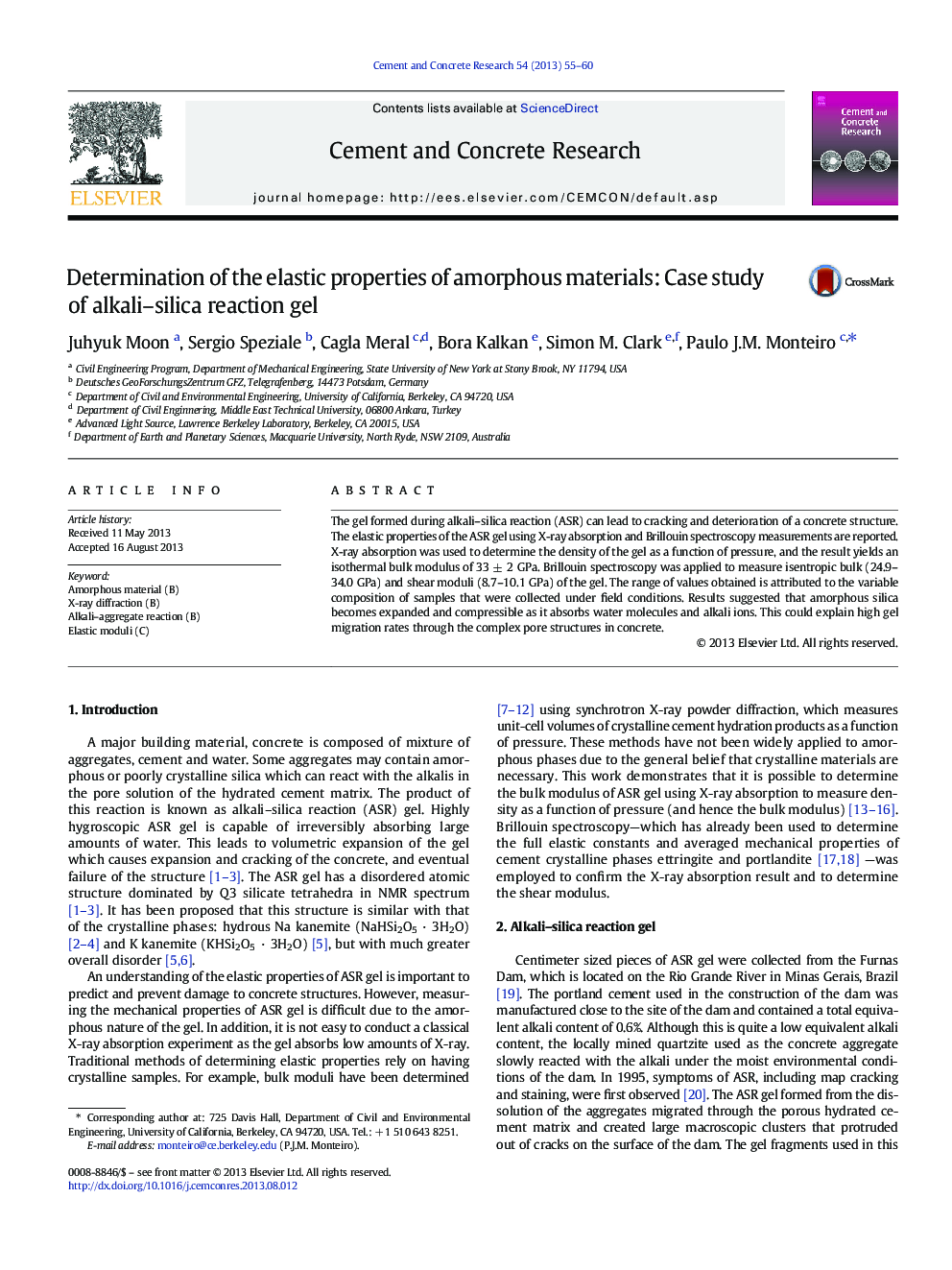| Article ID | Journal | Published Year | Pages | File Type |
|---|---|---|---|---|
| 1456440 | Cement and Concrete Research | 2013 | 6 Pages |
The gel formed during alkali–silica reaction (ASR) can lead to cracking and deterioration of a concrete structure. The elastic properties of the ASR gel using X-ray absorption and Brillouin spectroscopy measurements are reported. X-ray absorption was used to determine the density of the gel as a function of pressure, and the result yields an isothermal bulk modulus of 33 ± 2 GPa. Brillouin spectroscopy was applied to measure isentropic bulk (24.9–34.0 GPa) and shear moduli (8.7–10.1 GPa) of the gel. The range of values obtained is attributed to the variable composition of samples that were collected under field conditions. Results suggested that amorphous silica becomes expanded and compressible as it absorbs water molecules and alkali ions. This could explain high gel migration rates through the complex pore structures in concrete.
